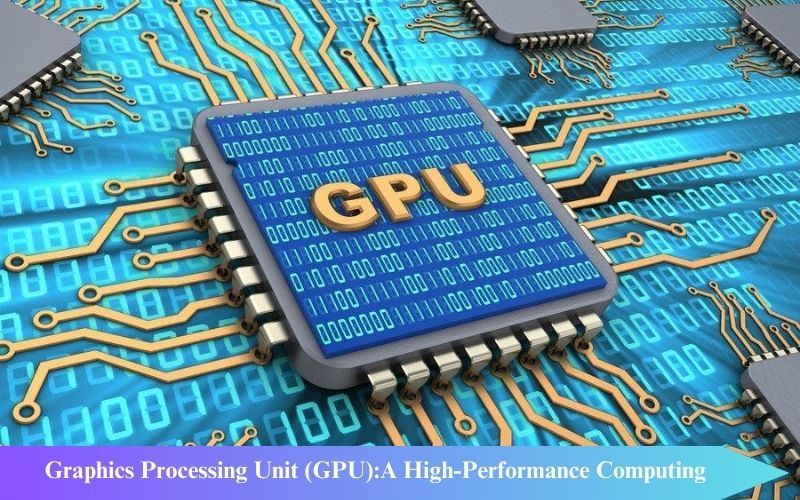Have you ever embarked on a journey where every step is fueled by the incredible power of Graphics Processing Unit (GPU)? As an avid explorer of the digital landscape, I have ventured into the realm of high-performance computing, and the GPU has been my trusted companion. Join me on this exhilarating journey as I share my experiences and insights into the world of Graphics Processing Units (GPUs).
The GPU Advantage: Unraveling the Core
In my travels through the vast terrain of technology, one thing became abundantly clear – the Graphics Processing Unit (GPU) is the unsung hero that powers the visual experience of our digital world. The term GPU, or Graphics Processing Unit, might sound familiar, but its prowess extends far beyond just rendering stunning graphics.
The Thrilling Beginnings: GPU in Gaming
Picture this: a dimly lit room, the glow of a gaming rig casting a cinematic light. That’s where my journey with GPUs began. These powerful processors are the heart and soul of gaming experiences, providing the muscle needed to render lifelike graphics, intricate textures, and seamless animations. The immersive worlds I explored owed their realism to the parallel processing magic of GPUs.
GPU in the Fast Lane: Accelerating AI and Machine Learning
As my technological journey evolved, I discovered that the GPU’s capabilities weren’t limited to gaming. The parallel architecture of GPUs proved to be a game-changer in the realm of artificial intelligence (AI) and machine learning. These processors, with their parallel processing prowess, can handle complex calculations at lightning speed, making them indispensable for AI applications and data-intensive tasks.
Navigating the GPU Landscape: Choosing the Right Companion
Selecting the right GPU for your endeavors is akin to choosing the perfect travel companion – it can make or break the experience. From NVIDIA to AMD, the market is teeming with options. Depending on your destination (or computing needs), you might opt for a high-end GPU for gaming or a specialized one for AI workloads. It’s crucial to assess your requirements and choose a GPU that aligns with your computing goals.
GPU: The Powerhouse Beyond Graphics
Enhancing Visualization Beyond Gaming
While GPUs are renowned for their role in gaming, their impact extends far beyond creating visually stunning landscapes. In the professional realm, GPUs are indispensable for tasks like video editing, 3D rendering, and CAD applications. The parallel processing capabilities of GPUs accelerate these demanding tasks, providing a smooth and efficient workflow for content creators and designers.
Parallel Processing and Scientific Simulations
In the scientific community, GPUs have become instrumental in conducting complex simulations and computations. Their parallel processing architecture allows scientists to crunch vast amounts of data in a fraction of the time compared to traditional CPUs. From climate modeling to drug discovery, the GPU’s computational prowess is shaping breakthroughs in various scientific fields.
GPU-accelerated Data Analysis
Big data analytics is another frontier where GPUs shine. The parallel processing muscle of GPUs proves invaluable in handling large datasets, performing intricate data analyses, and accelerating machine learning algorithms. As businesses grapple with the challenges of managing and extracting insights from massive data sets, GPUs emerge as powerful allies in this data-driven era.
Ray Tracing: Elevating Visual Realism
In the ever-evolving landscape of graphics, ray tracing is a revolutionary technique that simulates the behavior of light to create incredibly realistic visuals. GPUs, with their parallel architecture, excel in handling the complex calculations involved in ray tracing. This technology is not limited to gaming; it’s making waves in industries like film production, where lifelike CGI and visual effects are paramount.
Real-time Ray Tracing in Gaming
Building upon the ray tracing theme, real-time ray tracing is a game-changer in the gaming industry. It brings a level of realism to virtual environments that was once reserved for offline rendering. Modern Graphics Processing Unit (GPU)s, equipped with dedicated ray-tracing cores, enable gamers to experience stunning lighting effects, reflections, and shadows in real time, pushing the boundaries of immersive gameplay.
GPU in Mobile Devices
The influence of GPUs isn’t confined to desktops and workstations. Mobile devices, from smartphones to tablets, leverage GPUs to deliver smooth graphics and enhanced user experiences. Whether you’re scrolling through social media, watching videos, or playing mobile games, the GPU plays a pivotal role in ensuring a visually pleasing and responsive interface.
The Future: GPU and Quantum Computing Synergy
As we peer into the future, the synergy between GPUs and quantum computing holds immense promise. Quantum computers, with their ability to handle complex calculations at unprecedented speeds, can be complemented by GPUs to address specific tasks efficiently. This collaboration opens up new frontiers in solving problems that were once deemed computationally intractable.
AI Indies Recommends: Your Guide to GPU Excellence
In the vast expanse of digital knowledge, there are oases that offer valuable insights and recommendations. AI Indies, a hub for AI enthusiasts, is one such oasis. Their blogs delve into the latest trends, technologies, and expert advice. For an in-depth understanding of GPUs and their applications, AI Indies is a treasure trove waiting to be explored.
FAQs: Navigating the GPU Landscape
1. What makes GPUs ideal for high-performance computing?
GPUs excel in parallel processing, allowing them to handle multiple tasks simultaneously. This makes them perfect for high-performance computing tasks, such as gaming, AI, and complex simulations.
2. How do I choose the right GPU for my needs?
Consider your computing goals – whether it’s gaming, AI, or other data-intensive tasks. Research different GPU models, their specifications, and user reviews to find the perfect match for your requirements.
3. Can I use a gaming GPU for AI applications?
While gaming GPUs can handle some AI workloads, specialized AI GPUs often offer better performance. Evaluate your specific AI needs and choose a GPU accordingly.
4. What role do parallel architectures play in GPU performance?
Parallel architectures enable GPUs to process multiple tasks simultaneously, significantly boosting their performance. This feature is particularly beneficial for applications that involve complex calculations and data processing.
5. How can AI Indies help me stay informed about GPU trends?
AI Indies is a go-to resource for AI enthusiasts. Their blogs cover a wide range of topics, including GPU trends, technologies, and expert recommendations. Explore their content for valuable insights into the dynamic world of GPUs.
Embark on your GPU journey with the confidence of an expert traveler. Let the power of parallel processing elevate your computing experience, whether you’re navigating virtual realms in gaming or unlocking the potential of AI. And remember, for a wealth of AI knowledge, AI Indies is your compass in the digital wilderness. Safe travels!




